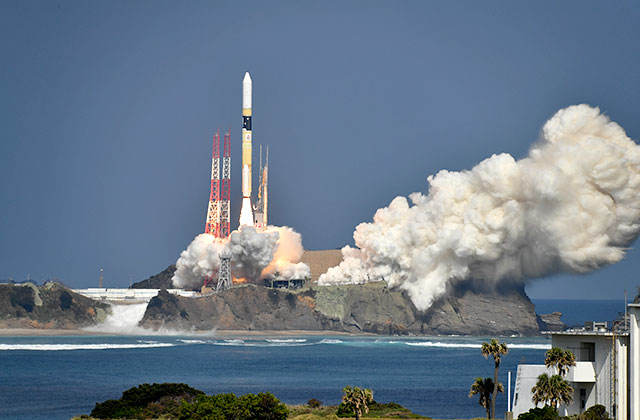Japan's H-2A launcher has successfully orbited the GOSAT-2 greenhouse gas observing satellite, along with the United Arab Emirates KhalifaSat satellite.
Japan's H-2A launcher has successfully orbited the Japan Aerospace Exploration Agency's Greenhouse gas Observing SATellite-2 (GOSAT-2), along with the United Arab Emirates KhalifaSat satellite. The launch took place from the Tanegashima Space Centre on 29th October.
GOSAT-2, also known as IBUKI-2, aims to gather observations of greenhouse gases with higher levels of accuracy than the first IBUKI platform, via even higher-performance onboard observation sensors. The earlier satellite observed carbon dioxide and methane at accuracy levels of 4 ppm and 34 ppb, respectively, at a 1,000-km mesh. The goals for the GOSAT-2 are to measure carbon dioxide at 0.5 ppm and methane at 5 ppb at a 500-km mesh.
The launch marked a milestone for the UAE Space Agency and the Mohammed bin Rashid Space Centre (MBRSC). KhalifaSat is the third remote sensing satellite owned and operated by the MBRSC, but the first built by Emirati engineers in the UAE.
Those engineers were trained as part of a partnership with Satrec Initiative, a South Korean satellite manufacturer, to design and manufacture DubaiSat-1 and DubaiSat-2. A selection of Emirati engineering graduates travelled to South Korea, where they spent 10 years gaining the necessary skills and knowledge of satellite manufacturing before returning to apply this in designing and manufacturing KhalifaSat.
The UAE is the third export customer for Japan's H-2A/H-2B launchers, which have now achieved 41 consecutive successful launches. The future H3, currently under development, is scheduled to make its maiden flight in 2020.
Japan has also been selected to launch the Emirates Mars Mission (EMM) spacecraft, planned to be launched in 2020.

